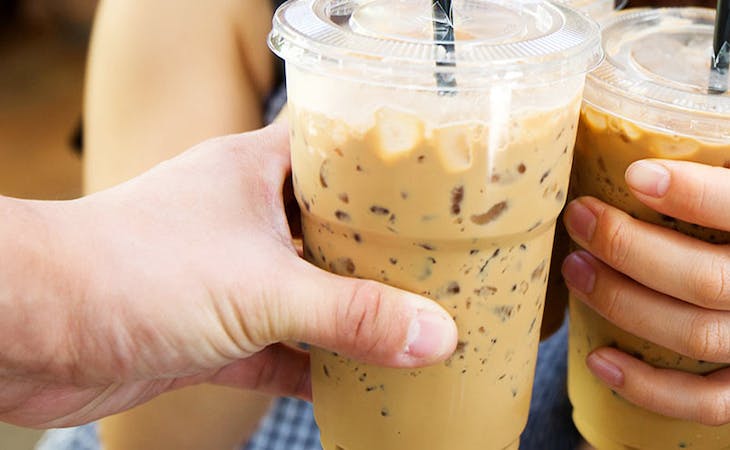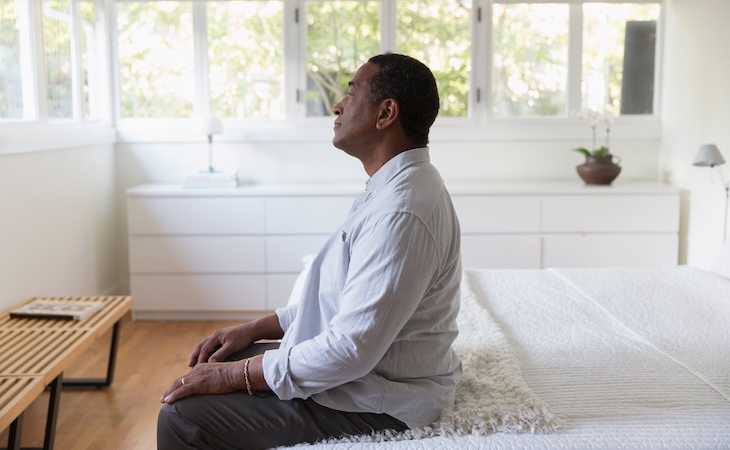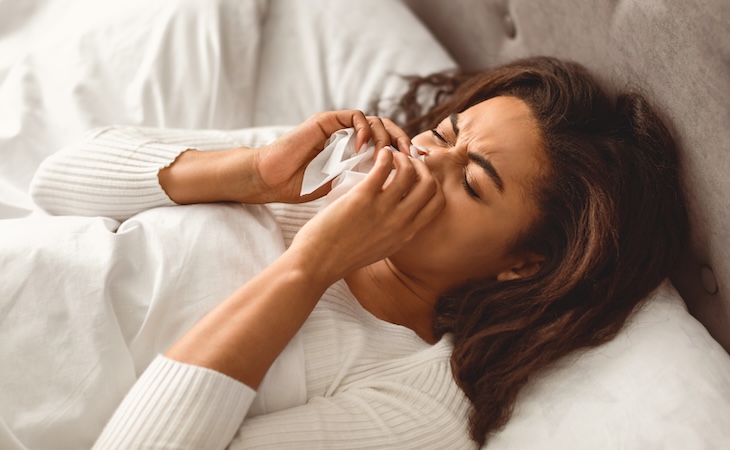Anyone who’s been around teenagers lately can’t help but notice the all-too-common sight of high schoolers arriving in the parking lot in the morning clutching their 32-ounce cups of coffee or swigging an energy drink.
According to the National Institute on Drug Abuse, caffeine consumption by adolescents has more than doubled since 1980. In fact, children and teens currently make up the fastest-growing population of caffeine users, with an increase of 70% in the past 30 years.
Why teens are turning to caffeine
What’s behind this dramatic uptick? Trust me: It’s not just because that mocha frappuccino tastes so good. No, it’s because teenagers are the most sleep-deprived of any age group: The Centers for Disease Control and Prevention reports that more than 60% of middle schoolers and 70% of high schoolers don’t get enough sleep every night.
As a result, teens are turning to caffeine for a boost instead of getting the rest they need. After all, when you’re trying to fit in schoolwork, a part-time job, sports practice, social media, and screen time—plus an early wakeup for class—it’s easier to chug a Monster than to get the recommended eight to 10 hours of shut-eye.
But that habit has serious consequences for teens’ physical and mental health. Consider this a wakeup call.
Caffeine and sleep deprivation: a vicious cycle
Caffeine, a central nervous system stimulant, is the most popular drug in the world. Yet few recommendations exist for how much—or how little—is safe for young people to consume. The Food and Drug Administration (FDA) has not set a safety level, though it notes that the American Academy of Pediatrics “discourages the consumption of caffeine (as well as other stimulants) by children and adolescents.” The Mayo Clinic suggests a maximum of 100 mg a day for adolescents (about a cup of brewed coffee) and none for younger children.
And yet, caffeine consumption in children as young as five or even younger is not uncommon. A 2015 Journal of Human Lactation study of toddlers living in Boston found 2.5 percent of 1–year–olds were drinking coffee! By age 2, more than 15 percent were consuming coffee, some as much as four ounces, or half a cup, a day.
The trend continues as children get older. A survey of 228 parents published in the Journal of Pediatrics in 2011 reported that 5- to 7-year-old children drank approximately 52 mg of caffeine daily, and 8- to 12-year-olds consumed 109 mg daily. And guess what? Those 8- to 12-year-olds averaged only 8.47 hours of sleep per night, less than the minimum of nine hours and far from the 12 hours recommended in the American Academy of Sleep Medicine’s pediatric sleep recommendations.
Among adolescents, whose sleep needs are already getting squeezed, caffeine use is ubiquitous. Studies have indicated that roughly 83% of teenagers consume caffeinated beverages regularly, and at least 96% consume them on occasion. Regular caffeine consumption is associated with later bedtimes and shorter time in bed; almost half of energy drink consumers in one study experienced insomnia.
In teens, the stimulant effects of coffee can be exacerbated by the naturally occurring melatonin “phase delay” that happens with puberty, in which the onset of sleep comes later at night. And since caffeine can remain in the body for as long as six to 10 hours, it’s easy to see why teens who have a high intake of caffeine sleep less, experience disrupted sleep patterns, and complain of morning tiredness.
Other studies have noted that teen caffeine consumption usually increases as the week progresses, likely compensating for the accrued sleep deprivation of each passing day. The vicious cycle ensues when excessive caffeine consumption disrupts sleep, leaving teens “tired and wired”—followed by more exhaustion, followed by the need for more caffeine. (Read my previous column on why sleep is the essential back-to-school supply.)
Caffeine: here, there, and everywhere
When researchers asked teens why they use caffeine, their reasons included energy (not surprising), taste, and “image enhancement”—i.e., all the cool kids are doing it. But there is another big reason for caffeine’s popularity: ease of access.
It would probably be quicker to list products that do not contain caffeine. In addition to the obvious sodas and energy drinks, manufacturers are putting caffeine in all sorts of products, including chewing gum, water, ice cream, cookies, marshmallows, waffles, syrup, beef jerky, cereal, jelly beans, sunflower seeds, brownies, mints, candy bars, lollipops, some pain relievers, and even lip balm.
Here are just a few popular caffeinated beverages on the market, and the amount of caffeine in a typical serving:
- Death Wish coffee (12 oz): 728 mg
- Killer coffee (8.46 oz): 430 mg
- Wired X344 energy drink (16 oz): 344 mg
- Monster energy drink (24 oz): 240 mg
- Starbucks caffe mocha (16 oz): 175 mg
- Starbucks bottled frappuccino (13.75 oz): 130 mg
- Red Bull (12 oz): 111 mg
- Brewed coffee (8 oz): 95-200 mg
- Amp energy drink (8.4 oz): 74 mg
- Mountain Dew (12 oz): 54 mg
- Snapple (peach, 16 oz.): 42 mg
- Coca-Cola (12 oz): 35 mg
- Hot cocoa (8 oz): 9 mg
Even decaffeinated beverages contain some caffeine (note that decaffeinated is not the same as caffeine-free). Decaf coffee samples in one Journal of Analytical Toxicology study showed a range of 0–13 mg per 16-ounce cup. A 14-ounce decaf coffee from Dunkin’ Donuts is reported to have 10 mg of caffeine, while a 16-oz Starbucks decaf has 25 mg. (Learn about caffeine gummies and whether they’re safe.)
Cautionary caffeine tales
The overall health consequences of caffeine use among children and teens are poorly understood, and the effects of caffeine on developing brains have not been determined. Research suggests a link between coffee consumption and higher rates of type 1 diabetes in children, depression, and substance use, not to mention the troubling physiological, behavioral, and psychological effects that accompany insufficient sleep. (Here’s a system-by-system look at what happens to your body when you don’t get enough sleep.) Even low doses of caffeine affect kids’ blood pressure and heart rates.
Tragically, caffeine toxicity can be fatal—as was the case with Logan Stiner, a high school honors student and prom king from LaGrange, Ohio, who was found unresponsive on the living room floor after ingesting powdered caffeine purchased on Amazon. His mother told the New York Times that Logan “was burning the candle at both ends, because he had a couple of projects that he had to finish for finals.” The medical examiner listed the cause of death as “cardiac arrhythmia and seizure, due to acute caffeine toxicity due to excessive caffeine ingestion.”
Another victim of caffeine was Davis Allen Cripe, a 16-year-old from South Carolina, who suffered a fatal overdose after reportedly consuming a large soda, a café latte, and an energy drink, reportedly within a two-hour time frame.
Researchers found that 40% of the 5,156 calls to poison control centers for “energy drink exposure” involved children under age 6. In fact, the American Academy of Pediatrics released a statement in 2011, Kids Should Not Consume Energy Drinks, and Rarely Need Sports Drinks, concluding that energy drinks pose potential health risks for children and adolescents, primarily because of the stimulant content in the drinks.
How to undo the caffeine fix
Given the fact that we don’t yet know the long-term effects of our children’s and teens’ ever-increasing caffeine consumption, we should work toward undoing the caffeine fix that too many of us—adults, teens, and children alike—rely on to get through the day. We can start by:
- Raising awareness and increasing education efforts on the risks involved with caffeine consumption.
- Familiarizing ourselves with the caffeine content of drinks and food products. The FDA does not require manufacturers to list caffeine content on nutrition labels, but you can find it at the Center for Science in the Public Interest and the Caffeine Informer.
- Keeping track of and analyzing caffeine intake. Many people don’t realize just how much they are consuming in a day. Caffeine calculator apps are widely available, such as Caffeine Tracker, Caffeine Calculator, and Caffeine Counter.
- Providing healthy, non-caffeinated food and drink alternatives.
- Limiting afternoon and evening caffeine consumption.
- Understanding that stimulants should not be considered a normal part of life—but sufficient sleep should be.
- Swapping out caffeine for healthier pick-me-ups such as power naps, protein-rich breakfasts, lemon water, exercise, smoothies, sunshine, decaffeinated herbal tea, and aromatherapy.
Caffeine is no substitute for sleep
Sleep loss takes a substantial toll on the mind and body, both for children and adults. But for young people, skipping out on sleep can be an extra risky proposition. Sleep significantly contributes to a child’s growth and development, learning, attitude, relationships, and quality of life—virtually every aspect of their daytime functioning.
What’s worse, studies show that adolescent caffeine users think they’re immune to its consequences: “They expect that caffeine use will not affect them, which suggests that they are somewhat uninformed about the effects of regular caffeine use.” So the next time your teen reaches for an iced latte, encourage them to fuel up on sleep instead. They’re guaranteed to get a healthier energy buzz.
Back-to-school time is often the most difficult, but there’s a lot you can do to make it easier like setting a designated school sleep schedule.
Snacking on sweets can also affect your shut-eye. Here’s how eating sugar interferes with sleep.




